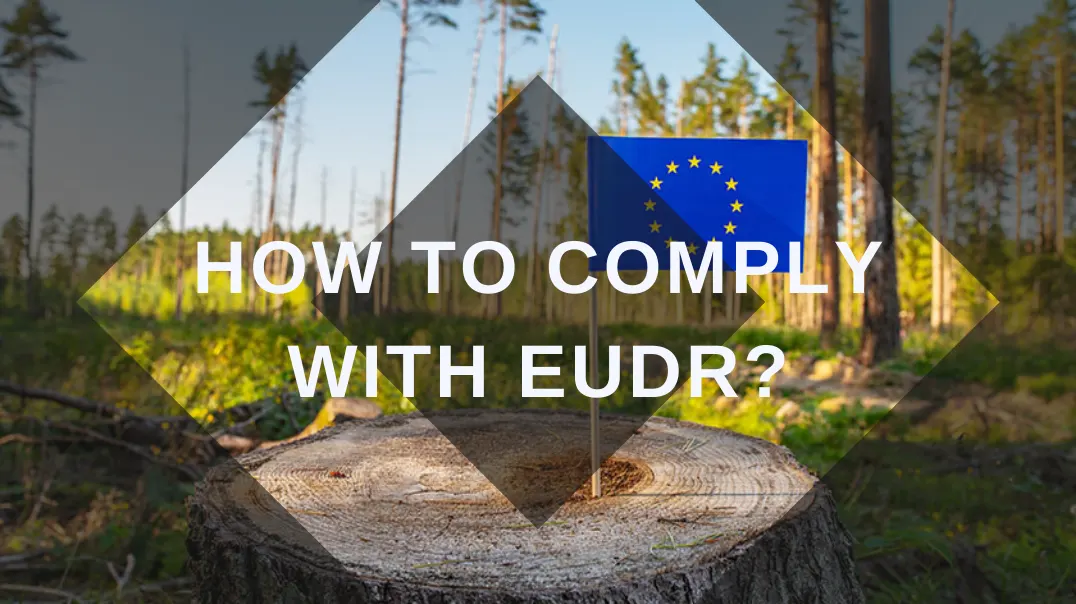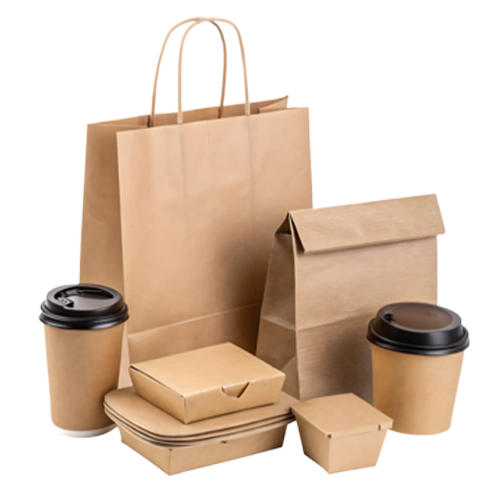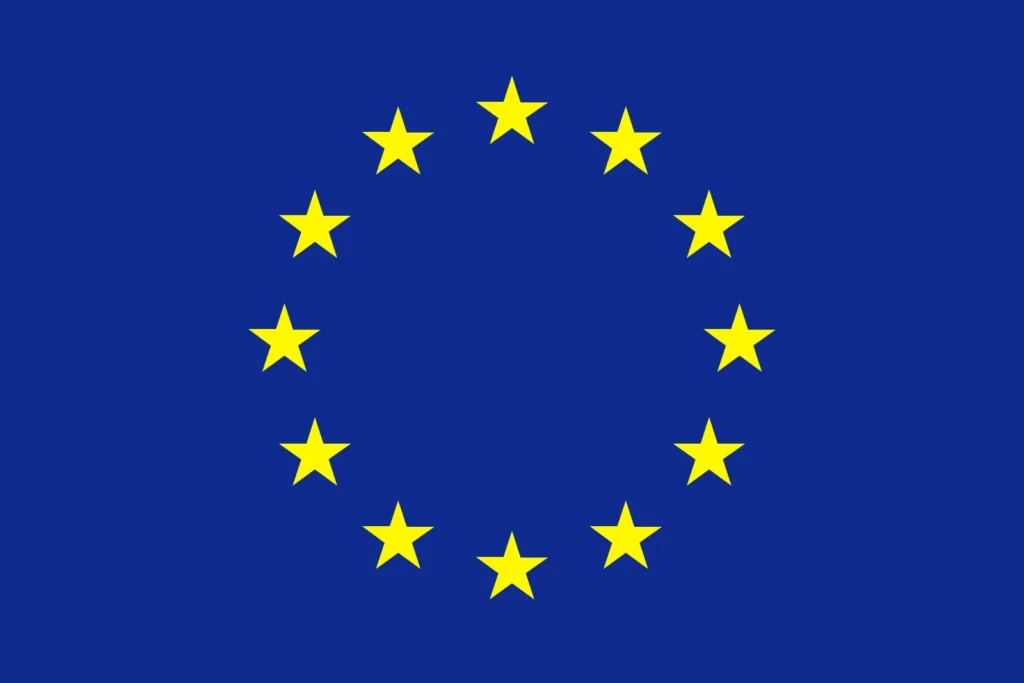Many companies exporting to the European Union are now facing a critical question: how to comply with EUDR. From December 2024, the European Union will require companies to prove that commodities such as wood, soy, cocoa, and coffee are not associated with deforestation. The European Union Deforestation Regulation (EUDR) represents a major shift in global trade rules. For businesses, this means new systems for due diligence, risk assessment, and supply chain monitoring.
Uncertainty about supply chain traceability, product verification, and reporting obligations has left businesses at risk of non-compliance. Failure to meet the regulation could result in fines, loss of market access, and reputational harm.
Yet compliance also presents an opportunity: businesses that adapt early can strengthen their supply chain transparency, gain customer trust, and secure a competitive edge. This article shows you how to turn regulatory challenges into strategic advantages by complying with EUDR.

1. Identify Your Role and Responsibilities
To comply effectively with EUDR, the first essential step is understanding exactly how the regulation applies to your organization. This means clarifying your role in the supply chain, the responsibilities that come with that role, and where your influence begins and ends.
What Role Do You Play?
- Operator: If your company is placing regulated commodities or derived products on the EU market for the first time, or exporting from the EU, you are an operator. That means full responsibility for due diligence, risk assessment, traceability, and documentation.
- Trader: If you only purchase or sell already placed products you may be a trader. You have fewer obligations, but still must ensure that what you buy has come from a compliant operator.
- SME vs non‑SME: The regulation gives SMEs extra leeway in timelines, though ultimately the substantive obligations remain. Know whether you fall under small or medium size thresholds, as your deadlines and perhaps internal resources will differ.
Responsibilities Associated with Your Role
Once your role is identified, you must map the specific responsibilities for that role. Some of these will include:
- Conducting due diligence for every batch you place or trade.
- Maintaining systems to collect, verify, and store required information (geolocation, legal status, validation of no deforestation etc.).
- Assessing risk levels of your supply sources.
- Implementing mitigation measures if risk is non‑negligible.
- Preparing and submitting a Due Diligence Statement for each batch.
- Maintaining records and being ready for audits or inspections.
Define Scopes of Products and Commodities
- List precisely which commodities and derivative products your organization handles. Commodities covered include cattle (beef), cocoa, coffee, palm oil, rubber, soy, and wood/timber.
- Also consider derived products or ingredients. For example, wood in furniture or soy in animal feed can bring in EUDR obligations.
Understand Legal Obligations and Penalties
- Know the deadlines: for many large and medium operators, the compliance date is December 30, 2025. For micro and small enterprises, it’s June 30, 2026.
- Recognize what penalties or market exclusion risks may be imposed by EU member states if you fail to comply: product bans, fines, reputational damage.

2. Training and Stakeholder Engagement
Even the best policies and systems will fail if they are not understood, supported, and implemented. EUDR compliance requires the involvement of stakeholders at all levels, both within the company and throughout the supply chain. Ensure everyone knows what to do through effective training.
Internal Training
- Ensure that leadership (executive team, board) is aware of EUDR requirements. Their buy‐in is needed for resource allocation and governance.
- Train procurement teams, sustainability / ESG departments, legal counsel, quality assurance, and supply chain managers. They will need to understand what information is needed from suppliers, how to verify it, and how to assess risk.
- Provide case studies or real examples to illustrate what non‑compliance looks like: what gaps have caught companies out, what documentation turned out to be insufficient, etc.
Supplier and Partner Engagement
- Communicate clearly with suppliers and sub‑suppliers about what data and proof you will need: legal documentation from origin, geolocation, forest cover status, and a commitment to comply.
- Where relevant, engage with local communities, government agencies, NGOs or third‑party certifiers to ensure legitimacy of proof of land rights and legal compliance.
3. Define Policies & Internal Governance Structure
A robust internal governance framework and clear policies are the skeleton of compliance. Without them, responsibilities blur and errors creep in.
Drafting Policy Documents
Establish a No‑Deforestation/No‑Forest Degradation Policy that clearly states:
- Scope of commodities covered.
- Cut‑off date (December 31, 2020) for forest loss.
- Legal compliance requirement (all local and national laws of producing countries).
- Expectations of suppliers.
- Consequences for non‑compliance.
Ensure that the policy is developed in a manner that aligns with the company’s existing code of conduct, ESG or CSR policy, thereby ensuring alignment across business functions.
Governance Structure
- Identify or appoint a compliance officer or team who will oversee EUDR implementation: collecting data, liaising with suppliers, developing risk assessments, maintaining records.
- Define roles and responsibilities: who collects geolocation data; who reviews supplier legal documentation; who validates forest cover status; who submits due diligence statements; who handles audits.
- Set up oversight, either via senior management / board level, to review compliance performance at regular intervals.

4. Establish Compliance Contracts with Suppliers to Improve Traceability
Contracts with suppliers are how you enforce and verify the downstream obligations.
Contractual Terms to Include
- Data provision clause: require suppliers to provide geolocation data, production or harvest dates, maps, and proof of forest cover status.
- Legal compliance clause: suppliers must warrant that they comply with all relevant laws of production country.
- Right to audit: you should have rights to conduct audits of supplier operations, records, and possibly site visits.
- Verification & record retention: require suppliers to retain relevant records for at least the period EUDR prescribes and to allow you or regulators to inspect them.
- Remedy / termination clause: define what happens if supplier is found non‑compliant—corrections, retraining, switching suppliers, or terminating contracts.
Traceability Clauses
- Suppliers should be required to delineate upstream supply chain: sub‑suppliers, origins of raw material, whether any mixing happens, so that traceability is maintained.
- For complex commodities (e.g. processed products that incorporate many ingredients), ensure contract clarifies which portion arises from which supplier/origin.
Verification & Certification Requirements
- Where available, reference acceptable third‑party certifications or verification schemes, but clarify that certification alone does not substitute for required geolocation/legal/temporal data unless scheme explicitly covers those.
- Where certifications are used, clauses should require documentation of certification validity, audit reports, expiry, coverage map etc.

5. Conduct Risk Assessments
Risk assessment is a core component under EUDR. Collecting data is not sufficient; you must evaluate it and determine where risks are higher, then respond accordingly.
- Map all your suppliers and sub‑suppliers, and define the production locations. Determine whether they are in low, standard or high risk producing areas. The EU maintains or will maintain risk classification for countries/regions.
- Assess legal risks: Is local law on deforestation / land use / environmental protection / labour strict? Is enforcement effective?
- Assess deforestation risk: Use data sources such as satellite imagery, historical deforestation patterns, land‑use change maps. Also consider forest degradation, not just outright deforestation.
- Assess supply chain complexity: If many intermediaries, opaque chain, mixing of production from different geographies, then risk goes up.
- Assess risk of circumvention or mixing of materials: possibility that materials of non‑compliant origin are blended with compliant ones, or that suppliers misreport.
- For each supplier, assign a risk rating; document your rationale. This becomes input for whether mitigation measures must be triggered.

6. Implement Risk Mitigation Measures
Once you have identified where risk exists, proactive measures are needed to reduce or eliminate those risks.
Types of Mitigation Measures
- Supplier remediation: ask suppliers to correct deficiencies (for example, formalize land tenure documentation, improve on‑site practices, secure necessary licenses).
- Alternative sourcing: for sources deemed too high risk, switch to alternative suppliers or regions with better compliance records or lower risk.
- Batch segregation: if products from different sources are mixed, maintain separation in inventory / logistics so that non‑compliant or uncertain batches can be identified and excluded.
- Certification and third‑party verification: obtain forest certification, sustainable commodity certification, or engage independent verifiers to audit environmental, legal, and social compliance.
- Contracts with performance incentives or penalties: reward suppliers who achieve or maintain compliance; penalize or terminate contracts for those who fail.
Practical Considerations
- Budgeting for mitigation activities: training, audits, technological tools, mapping, legal consultancy all cost money; companies must plan for these.
- Timeframes: some mitigation measures (land legalisation, securing permits) may take months or years. Set realistic deadlines and track progress.
- Monitoring effectiveness: after implementing mitigation, monitor whether risk is actually reduced—via updated satellite images, supplier reports, site visits, or third‑party audits.

7. Geolocate and Monitor
Accurate geolocation and ongoing monitoring are central to proving that products comply with EUDR. Without them, claims of non‑deforestation are hard to verify, and legal or regulatory challenges become likely.
Geolocation Data Collection
- For each plot / field / production site, obtain geographic coordinates (latitude and longitude) or, better, polygons defining boundaries.
- Use remote sensing, high resolution satellite imagery, or geographic information system (GIS) tools.
- If suppliers are small farms without mapping experience, assist them in generating maps or polygons. Some public‑domain tools or NGO partnerships may help.
Forest Cover and Change Monitoring
- Determine forest cover status as of the cut‑off date (December 31, 2020) using historical satellite imagery. Then monitor subsequent change to detect whether deforestation or degradation has occurred.
- Use providers of forest loss data or services that track change (e.g., Global Forest Watch, specific GIS platforms, or commercial satellite imagery providers) to maintain up‑to‑date monitoring.
Cross‑Validation and Verification
- Compare supplier‑provided maps, reports, or statements with remote sensing data. If discrepancies arise, request clarifications or additional evidence.
- Use on‑the‑ground verification where feasible or necessary. Site visits or independent verification by local experts can help resolve ambiguous cases.

8. Submit Due Diligence Statements
Submitting Due Diligence Statements (DDS) is a legal requirement for Operators under EUDR. These statements crystallize your efforts: what you have done to ensure products are deforestation‑free, legal, and traceable.
What a Due Diligence Statement Must Contain
- Identification of the relevant product or commodity, including the derivative or processed form.
- Name and contact information of the Operator making the statement.
- Information on origin: where the commodity was produced, with geolocation data or area of production.
- Evidence that the commodity is from land that has not undergone deforestation or forest degradation after the cut‑off date, and that it complies with the relevant legislation of the country of production.
- Description of supply chain including suppliers and sub‑suppliers, with risk assessment outcomes and any risk mitigation that was undertaken.
- A date of harvest or production for the product in question.
- Signature (or official approval) by management confirming the truthfulness of the statement and responsibility for the information provided.
Submission Process
- Use the EU’s designated Information System as required by the EUDR to submit the DDS. Be sure you know the format, required fields, any templates or guidelines.
- For each batch put on the market (or exported), a statement is needed. Keeping this accurate and timely is critical.
Timing and Submission
- The statement must be submitted before placing the product on the EU market or exporting it.
- Use of authorised representatives is permitted if the operator is based outside the EU.
- Where simplified procedures apply (e.g., for products already covered by previous statements, or in low risk situations), you may not need a full statement per batch—consult guidance from the competent authority.

9. Recordkeeping & Audit Preparation
Compliance does not end with submitting the statement. EUDR requires you to maintain records, be ready for audits, and show a reliable trail of what you did.
- Retain all relevant documents (supplier contracts, geolocation data, land‑use / land ownership documentation, risk assessments, mitigation evidence, geospatial imagery, audits) for at least five years, or as required by the competent authorities.
- Maintain clear version control: if any data or supplier info changes (e.g. supplier merges, farm boundaries shift, change of ownership), record those changes.
- Establish internal audit schedules: check periodically that all suppliers are still compliant, documentation is still valid, no new risks have emerged.
- Prepare for external audits or inspections by national competent authorities. Make sure your records are well organized, accessible, and comprehensible.
- Ensure your internal systems (ERP, supply chain management, GIS databases, compliance software) allow quick retrieval of files, data, and traceability of decisions.
- For SMEs, even if simplified obligations apply, be sure you have the DDS reference numbers from upstream, plus documentation to show you did obtain them and stored them properly.
What You Should Do Now: Action Plan (Within Next 3‑6 Months)
To move from planning to doing, here is a practical timeline with concrete priorities:
- Gap Analysis: Audit your current supply chain to see what data you already have vs what is required under EUDR: geolocation, legal documents, past land use, supplier contracts etc.
- Design or Update Policies & Contracts: Draft your company’s EUDR policy, update supplier contracts/agreements to include necessary clauses.
- Select Pilot Products / Suppliers: Choose a few commodities / suppliers with higher risk or strategic importance to pilot the full compliance workflow.
- Set Up Monitoring Tools: Acquire or subscribe to remote sensing/geospatial tools; define internal dashboards / tracking metrics.
- Conduct Training: Train relevant internal teams; engage key suppliers so they understand expectations.
- Implement Monitoring & Auditing: Begin verifying geolocation, collecting supporting documents, making risk assessments.
- Submit Sample Due Diligence Statements (Internally): Even before full compliance is required, practice preparing DDS for hypothetical or small batches to test your processes.
Conclusion
Complying with EUDR is a complex but manageable process. It involves knowing your role, training your teams and partners, defining governance and policies, contracting with suppliers, assessing and mitigating risk, geolocating and monitoring production sites, submitting due diligence statements, and maintaining records with audit readiness. When done well, EUDR compliance is not only a legal requirement—it becomes part of your organization’s competitive advantage, enhancing reputation, reducing risk, fulfilling commitments to sustainability, and opening doors to markets that value deforestation‑free products.







